Local Wildlife – UPDATE March 19, 2014
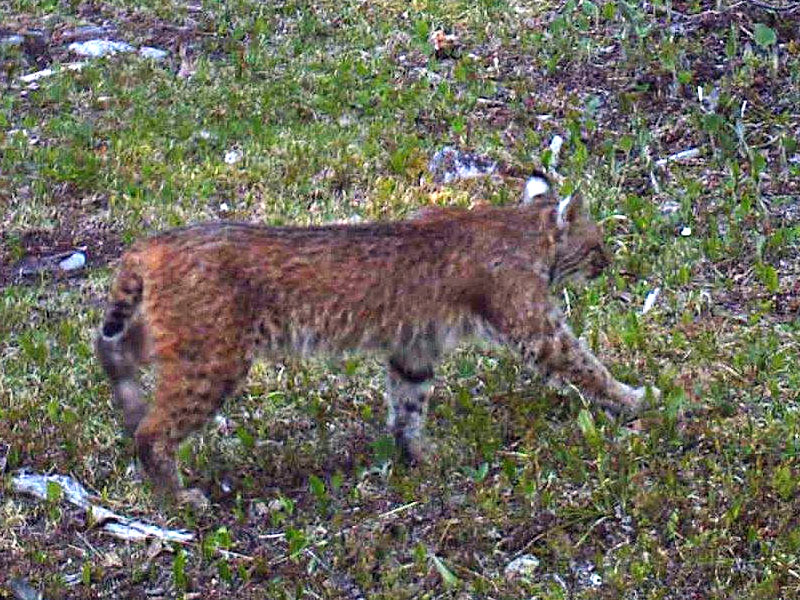 Bobcat caught on trail cam May 16, 2012Both lynx and bobcats live here although we usually see only tracks. The bobcat photo is from a Lily Fan's trail cam 3 miles from here on May 16, 2012.
Bobcat caught on trail cam May 16, 2012Both lynx and bobcats live here although we usually see only tracks. The bobcat photo is from a Lily Fan's trail cam 3 miles from here on May 16, 2012. 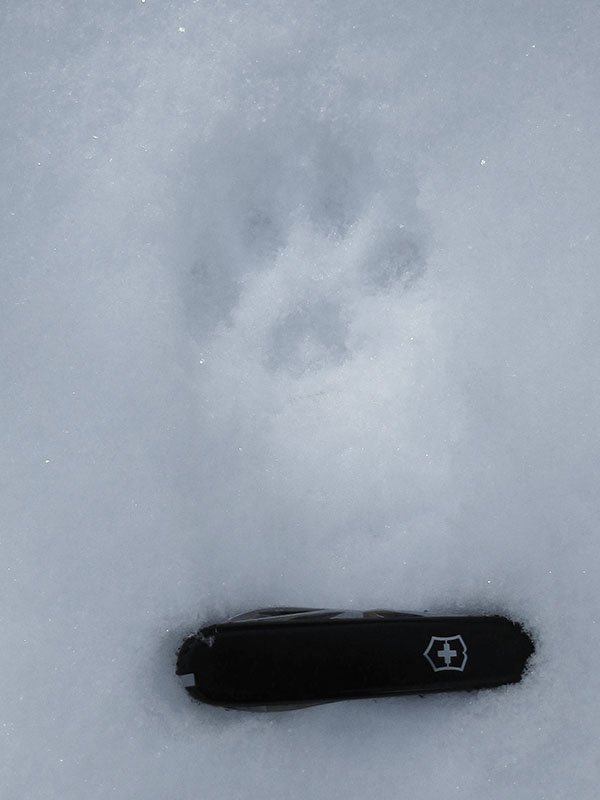 Bobcat trackThis past weekend, the same Lily Fan sent us pictures of two sets of cat tracks for identification. We sent them on to local expert, Steve Loch. For the trackers among us, Steve replied, “Given the photos of print, track and trail – the larger tracks are lynx. However, I would want to see more of the trail prior to considering the smaller track a bobcat. I assume a shallow layer of powder covered a mild sub-surface crust in the snow.
Bobcat trackThis past weekend, the same Lily Fan sent us pictures of two sets of cat tracks for identification. We sent them on to local expert, Steve Loch. For the trackers among us, Steve replied, “Given the photos of print, track and trail – the larger tracks are lynx. However, I would want to see more of the trail prior to considering the smaller track a bobcat. I assume a shallow layer of powder covered a mild sub-surface crust in the snow. 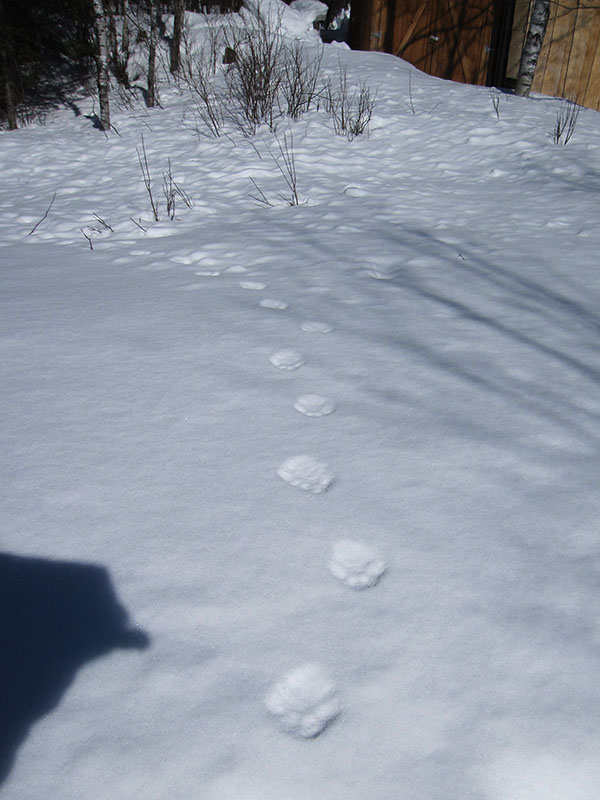 Lynx trailGiven that, a bobcat's heel pad (interdigital pad) should have shown a stronger print-mark with greater definition somewhere along its trail. Based on the size and configuration of that single print, one could not yet rule out lynx, bobcat or lynx-bobcat hybrid (rare).”
Lynx trailGiven that, a bobcat's heel pad (interdigital pad) should have shown a stronger print-mark with greater definition somewhere along its trail. Based on the size and configuration of that single print, one could not yet rule out lynx, bobcat or lynx-bobcat hybrid (rare).”
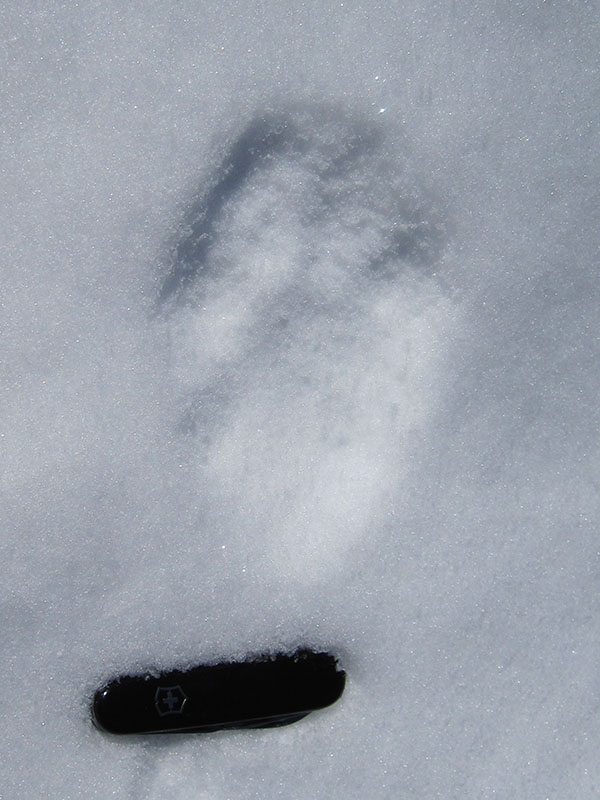 Lynx trackAbout a week ago (March 13), a fisher stopped by for some bird suet. He had the same distinctive chest markings as the fisher we photographed here last fall (update of October 22 at http://tinyurl.com/l62vsvd). His chest markings run up onto his throat and down each foreleg. We were glad to see this familiar, distinctively marked fisher made it through the trapping season to enjoy and be enjoyed another year.
Lynx trackAbout a week ago (March 13), a fisher stopped by for some bird suet. He had the same distinctive chest markings as the fisher we photographed here last fall (update of October 22 at http://tinyurl.com/l62vsvd). His chest markings run up onto his throat and down each foreleg. We were glad to see this familiar, distinctively marked fisher made it through the trapping season to enjoy and be enjoyed another year.
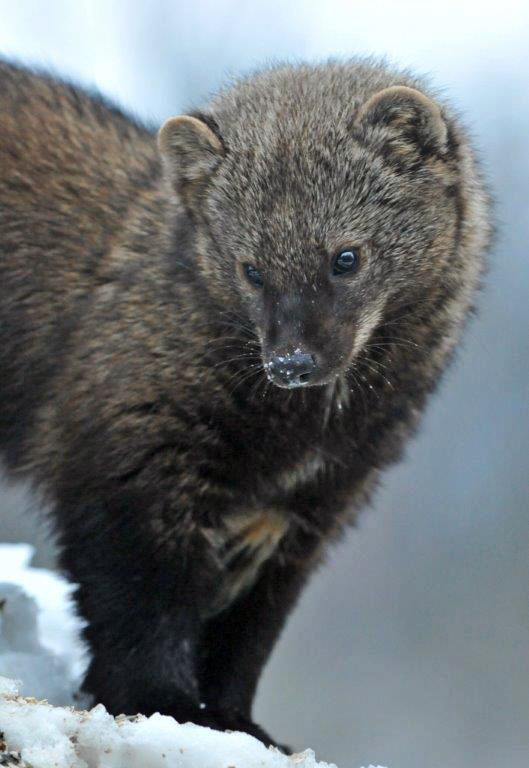 Fisher - March 13Since mentioning the arrival of the first crow on March 10, the forest has been ringing with their sounds. It’s mating season. A person would think all 31 million of North America’s crows are here. The West Nile Virus that has eliminated over half of North America’s crows doesn’t seem to be a problem here where West Nile is also very uncommon among humans.
Fisher - March 13Since mentioning the arrival of the first crow on March 10, the forest has been ringing with their sounds. It’s mating season. A person would think all 31 million of North America’s crows are here. The West Nile Virus that has eliminated over half of North America’s crows doesn’t seem to be a problem here where West Nile is also very uncommon among humans.
On the upside, the legal matter we mentioned last night is something that would be good. Cross your fingers.
An early update before the grandkids arrive.
Thank you for all you do.
—Lynn Rogers and Sue Mansfield, Biologists, Wildlife Research Institute and North American Bear Center
